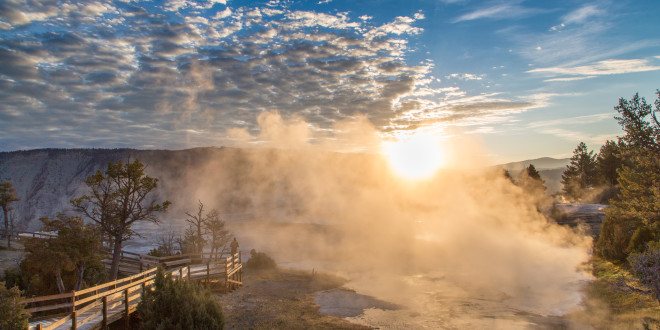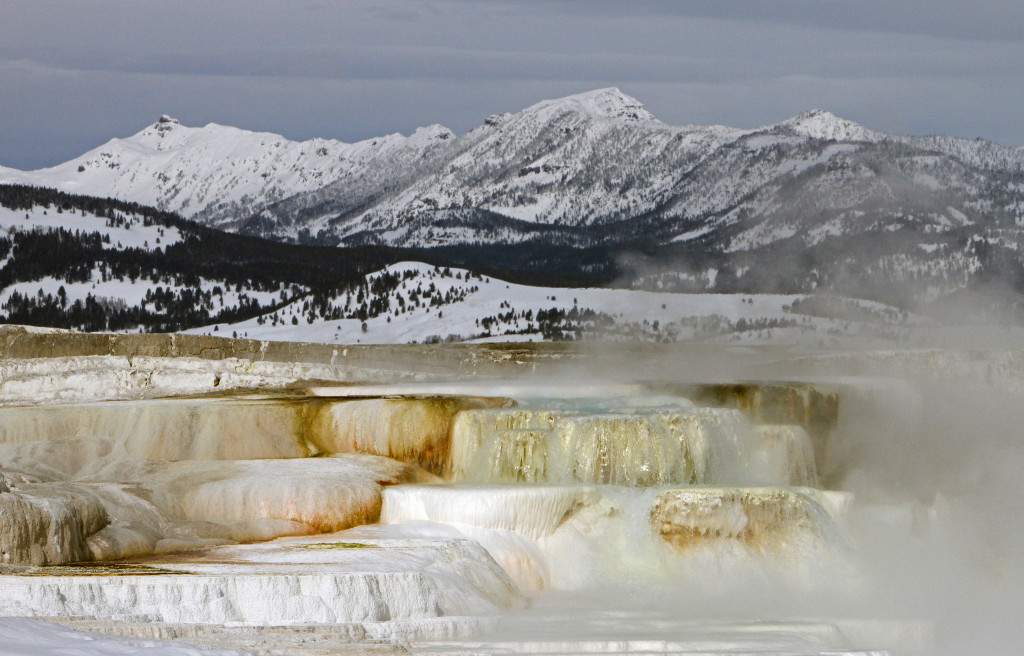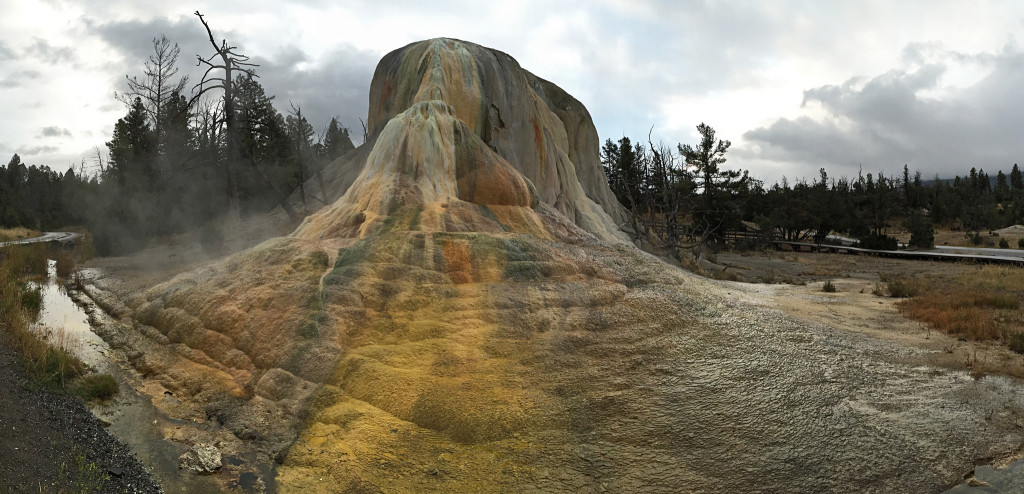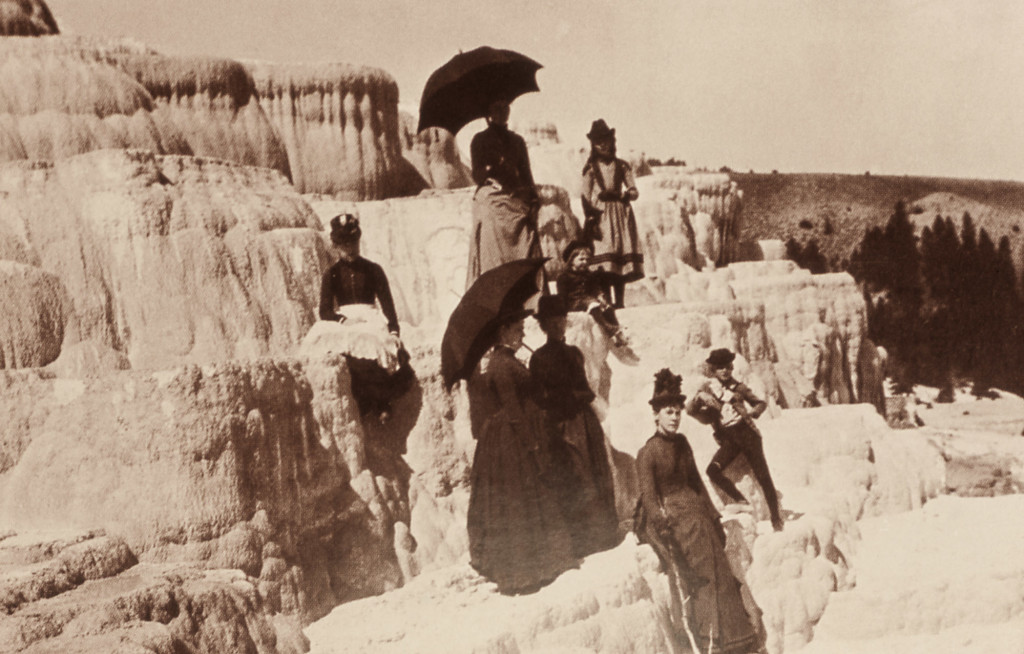Undoubtedly, Mammoth Hot Springs is one of the most unique thermal basins in Yellowstone National Park.
Driving into the Park through the North Entrance, you’ll follow the Gardiner River several miles, eyes peeled for critters. Mountains and conifers lull you into a familiar serenity. Then, as you make the climb up to Mammoth hotel—BAM! A patch of alabaster snaps you to attention. You have arrived.
The Mammoth Terraces are divided into two sections: the Lower Terraces and the Upper Terraces. Although they’re divided as such, Mammoth Hot Springs is essentially one attraction, rather than a sum of parts.
As you approach the Lower Terraces, the first feature you’re likely to see is Liberty Cap, an enormous growth of rock, believed to be an extinct hot spring that accumulated over the course of thousands of years.
In terms of tackling the basin, there are a few options at hand. The first is to park at the bottom just down the road from Liberty Cap. From there, you can walk up and see some of Mammoth’s most famous features: Palette Spring; Minerva, Cleopatra and Jupiter Terraces. Or, you can drive up the road to the upper parking lot. This lot offers good access to both the Main Terrace and Canary Spring.
The Upper Terraces have the advantage of being along a paved road, making it easier to access them, although this arrangement can lead to bottlenecking around the pullouts. On the whole, these terraces are less commanding than the ones comprising the Lower Terraces. With the exception, of course, of Orange Spring Mound, shown below.
In terms of temperature, Orange Spring Mound is noticeably cooler, covered in orange cynanobacteria (the lifeforms that gives all of Yellowstone’s thermal features their coloring, based on the temperature of the water). It’s a unique structure among the other Mammoth features, rising suddenly amid rock and pine. Well worth stopping for a picture.
Throughout Yellowstone’s history, Mammoth Hot Springs has showcased some of fullest and most ornate colors seen in Yellowstone’s collection of thermal features. Indeed, around the turn of the century, postcards of Mammoth’s terraces, such as the one shown below were hot ticket items. As an ambassador for visitors streaming in through the North Entrance, riding down on the Northern Pacific Railway, Mammoth was top tier.
Even today, it’s fair to say there’s a certain elegance to be found in Mammoth’s many terraces. Obviously, there aren’t any crowd-pleasing geysers like Old Faithful or Giant Geysers, and many of the Park’s hot springs (such as Grand Prismatic and Emerald Pool) are prettier in terms of color. But for sheer effect and magnitude, Mammoth Hot Springs is unparalleled.
Unfortunately, especially in the early portion of the Park’s history, it was ill-treated. Numerous visitors walked out onto the terraces, posing for photos, likely breaking off bits as gaudy gewgaws. Indeed, travertine coating was a popular activity with visitors around the turn of the century: items such as horseshoes and even picture frames would be placed in the flowing waters and allowed to accumulate minerals. Then they’d be placed on a drying rack and subsequently brought back to the tourist’s hearth and home.
These days, it’s ill-advised to go tromping around. Besides putting yourself at risk, you’re putting the terraces themselves at risk. The Mammoth Hot Springs are a study in geologic patience, accruing over many, many years.
 Yellowstone Insider Your Complete Guide to America's First National Park
Yellowstone Insider Your Complete Guide to America's First National Park




You must be logged in to post a comment.